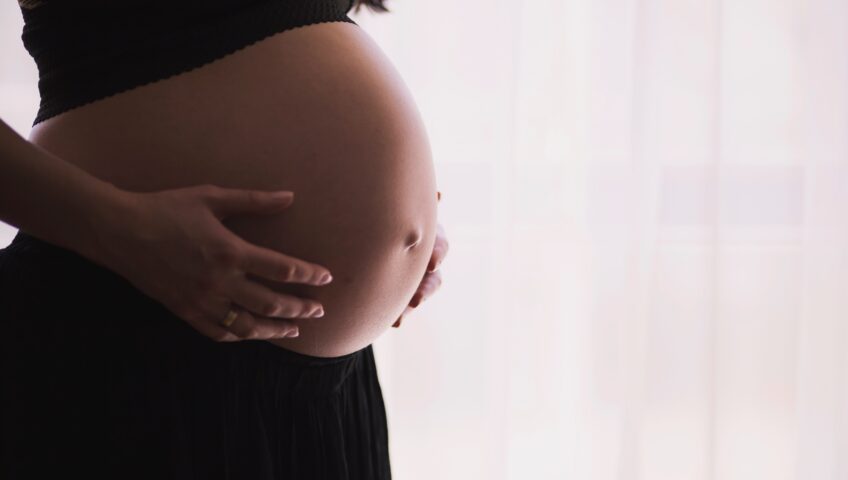
Pregnancy Problems: Diastasis Recti Abdominis
Pregnancy can be a breeze for some, but for others, complications may arise. They can affect the mother’s health, baby’s health, or both. These complications can occur before, during, and after pregnancy. Therefore, it’s important for women to receive medical care throughout her pregnancy to reduce the risk of complications. In this article, we’ll go through some of the most frequently asked questions about a common pregnancy issue: Diastasis Recti Abdominis (DRA).

Q: What is Diastasis Recti Abdominis (DRA)?
Diastasis Recti Abdominis (DRA), AKA Rectus Diastasis or parted tummy muscles, is a separation of the 2 bellies of the rectus abdominis at the linea alba (midline of the abdominals). This condition mainly occurs during pregnancy and is likely to affect more than 50% of all pregnancies.

Q: Why does this occur during pregnancy?
As the uterus continues to grow, changes in hormones – mainly relaxin (A hormone produced by the ovary and the placenta which relaxes the ligaments in preparation for childbirth) contributes to the abdominal muscles being overstretched and weakened.

Q: How does this affect the body?
Weakened abdominal muscles and DRA can affect posture of the pelvis and lower back. Increased anterior rotation through the pelvis will place greater strain on the lumbar spine. Altered posture, changes trunk stability and hence the way we sit, walk, and move can change the way certain muscles are used. Some muscles will thus be tight and overactive while others become weak and under active.

Q: How do you assess for a DRA and what is the process?
Typically, a Physiotherapist will conduct an assessment to find out if a DRA is present. It involves the individual lying on her back with her legs bent. A mini ‘sit up’ movement is performed where the head, neck, and shoulders are lifted from the bed whilst the Physio feels into the abdominals for any separation of the recus abdominus muscle. This is usually felt at the umbilicus level and 5cm above and below, to assess for upper and lower abdominal compromise.

Q: Is there any difference between women who perform consolidated abdominal strengthening pre and during pregnancy compared to those who do not?
An article published by Chiarello et al (2005) looked at exactly this. The group of pregnant women who participated in an abdominal exercise program exhibited a significantly smaller separation of the rectus abdominis regardless of the location on the abdomen. The abdominal exercises performed by the pregnant women in this study may have helped prevent or reduce the onset of DRA.

Q: Does it matter which abdominal strengthening exercises are performed?
Yes, specific exercises that ‘draw-in’ the umbilicus focuses on activating the transversus abdominis and obliques.

Q: Why is this type of transversus and oblique muscle strength training important whilst being pregnant?
The anterior (front) rectus sheath is formed by the internal and external oblique muscles, while the posterior (back) rectus sheath is formed by the internal oblique and transversus abdominis. These internal muscles provide abdominal strength and support to the linea alba.

Q: Can anyone participate in these exercises?
Unless there are any risk factors that may prevent the pregnant lady from participating in strengthening exercises, yes they can. It is strongly recommended to implement some strength training into one’s workout or day to day routine to reduce the risk and/or the severity of DRA.
Simple Exercises To Reduce The Risk Of Diastasis Recti Abdominis
Now that we’ve gotten the questions out of the way, let’s get into the exercises!
Don’t Be Shy To Ask For Help
Abdominal strengthening is a critical factor in the development of abdominal muscle strength to help reduce separation in pregnancy. Diastasis Recti Abdominis is more common in non-exercising pregnant women with 90% of them exhibiting a separation of the rectus abdominis (Chiarello et al 2005). The maintenance of abdominal strength should therefore be a priority for clinicians and their patients during pregnancy.
If you would like an assessment either pre, during or post pregnancy reach out to our Physiotherapist Sarah Hayward who can help and advice on any specific exercises.
Written By: Sarah Hayward – B.Sc. (Hons) Physiotherapy (UK), M.S.P.A.
Sarah has over 16 years of qualified experience as a Physiotherapist and Polestar Pilates-certified rehabilitation specialist. She has worked with top sports medicine doctors during her role with Royal Air Force and in international sports teams. She specialises in treating musculoskeletal conditions, chronic spinal occupational injuries, acute issues, and women’s health. Sarah has also attained certifications in orthopaedic medicine and manipulation & manual concepts.
References:
The Effects of an Exercise Program on Diastasis Recti Abdominis in Pregnant Women
Chiarello, Cynthia M. PT, PhD1; Falzone, Laura A. PT, MS2; McCaslin, Kristin E. PT, MS3; Patel, Mita N. PT, MS4; Ulery, Kristen R. PT, MS5
Journal of Women’s Health Physical Therapy: Spring 2005 – Volume 29 – Issue 1 – p 11-16
